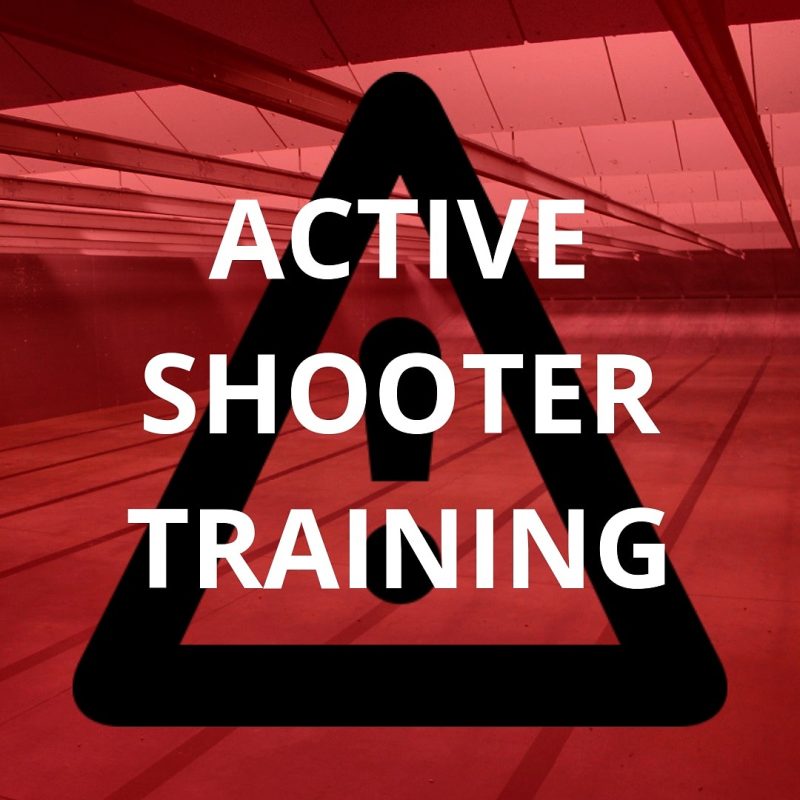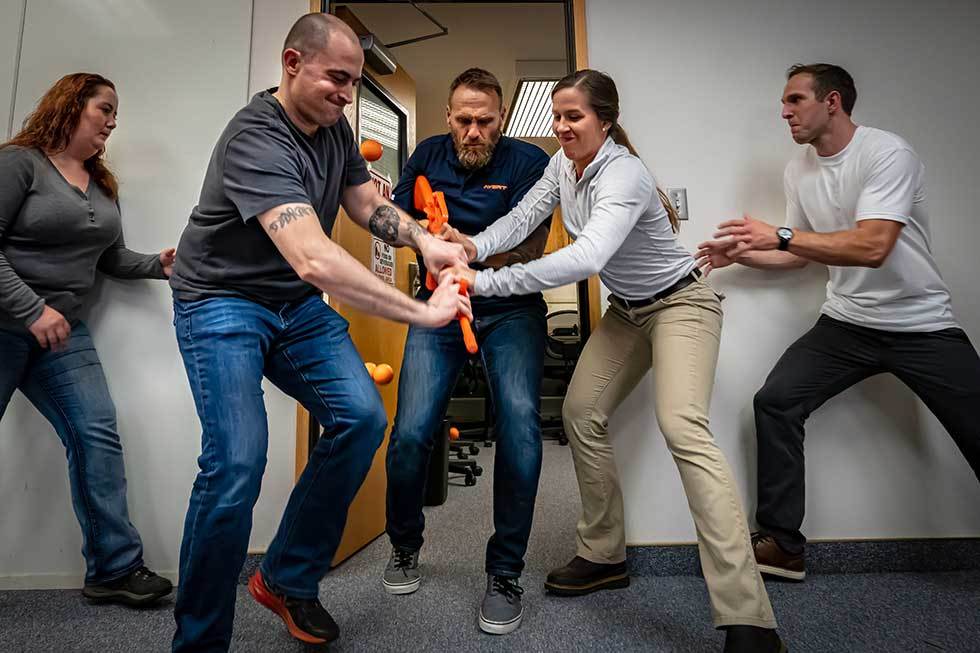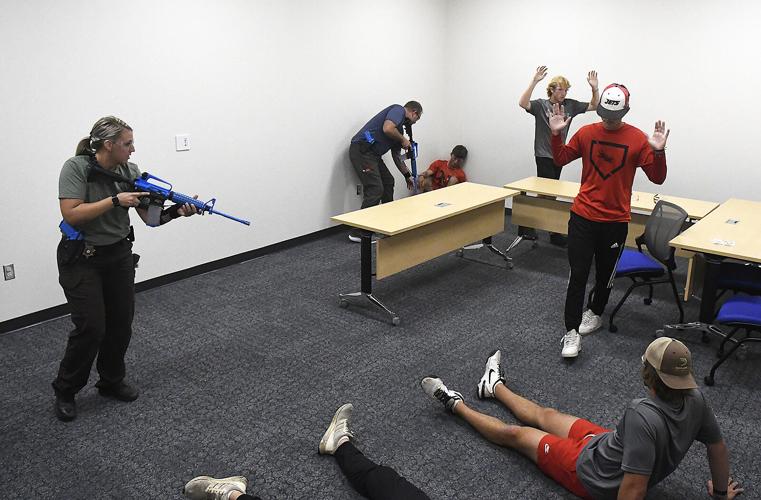How Active Shooter Training Can Conserve Lives in Crisis Situations
How Active Shooter Training Can Conserve Lives in Crisis Situations
Blog Article
Discovering the Trick Parts and Objectives of Effective Energetic Shooter Training Programs
Energetic shooter training programs are crucial in equipping individuals and companies with the needed skills to respond effectively to prospective hazards. As we discover the complexities of these training programs, it ends up being apparent that recognizing their extensive nature is important to improving safety and security measures and response abilities.
Importance of Energetic Shooter Training
Energetic shooter training programs are vital for improving readiness and reaction in the face of potential dangers. These programs intend to equip people, organizations, and neighborhoods with the understanding and skills required to properly react to active shooter situations. The increasing regularity and seriousness of such events emphasize the significance of positive steps, as prompt and educated feedbacks can considerably reduce damage.

In addition, these programs can aid reduce the stress and anxiety and worry that usually accompany discussions about prospective hazards. By supplying structured advice and practical strategies, people acquire self-confidence in their capability to respond suitably. Ultimately, the importance of energetic shooter training exists in its potential to save lives, reduce injuries, and grow a ready and resistant area efficient in facing unanticipated obstacles.
Secret Elements of Training Programs
Efficient active shooter training programs typically incorporate numerous vital elements developed to prepare participants for real-world circumstances. The first part is extensive education on the nature of energetic shooter incidents, consisting of stats, study, and mental aspects that affect aggressors. This academic foundation is essential for fostering recognition and understanding among individuals.
Following, programs typically include training on personal precaution, highlighting the "Run, Hide, Battle" technique. Participants find out exactly how to assess their atmosphere, make quick choices, and take proper actions throughout a dilemma. Additionally, the inclusion of efficient communication abilities is essential, as individuals must recognize exactly how to report incidents and share important details with law enforcement.
Another necessary component is the participation of police or safety and security professionals, that provide insights into tactical actions and the relevance of participation during a crisis. Programs should deal with the psychological aftermath of an active shooter scenario, using techniques for dealing and healing.
Lastly, continuous training and correspondence course are critical to ensure that understanding stays present and individuals feel great in their capabilities. Together, these crucial components develop a well-shaped training program that furnishes individuals to respond efficiently to an active shooter occasion.
Realistic Scenario Simulations
Practical situation simulations are an essential element of active shooter training programs, offering individuals with the opportunity to participate in hands-on technique that mirrors potential real-life circumstances. These simulations boost the training experience by creating an immersive atmosphere where individuals can apply academic understanding in useful settings.
Via using role-playing, mock circumstances, and specialized training centers, individuals experience the prompt challenges and stressors related to an active shooter occurrence. This approach of training promotes quick decision-making, team effort, and the application of safety protocols under stress. It permits -responders to develop vital abilities such as situational awareness, risk analysis, and effective discharge procedures.
Furthermore, realistic simulations aid to recognize potential weaknesses in individuals' feedbacks, enabling trainers to give targeted comments and enhance general readiness. The unification of varying circumstances, including different places and enemy profiles, even more enriches the training experience, making sure that individuals are well-appointed to take care of a variety of potential circumstances.
Eventually, these simulations offer not just to advise however also to develop confidence among individuals, fostering a sense of preparedness that is important for reliable emergency situation reaction despite an energetic shooter threat. active shooter training.
Interaction Strategies in Training
Clear interaction is important in active shooter training programs, as it straight influences the efficiency of reaction efforts throughout a dilemma. Training participants should recognize the procedures and treatments that will assist their actions if confronted with an active shooter situation. Establishing clear lines of communication ensures that all people involved can relay information immediately and properly.

Furthermore, training programs must highlight the relevance of active listening - active shooter training. Participants must be educated to translate and react to information successfully, lessening misunderstandings that could result in harmful scenarios. Routine responses sessions post-training can likewise refine communication approaches, ensuring that all individuals feel equipped to share their experiences and tips for renovation. Ultimately, effective communication methods are essential for preparing people to respond emphatically and cohesively in the face of an energetic shooter case.
Mental Readiness Techniques
Emotional preparedness methods are significantly identified as crucial elements of active shooter training programs. These strategies intend to outfit individuals with the psychological strength needed to react efficiently in high-stress circumstances. By cultivating a frame of mind attuned to prospective dangers, participants can much better manage worry, anxiousness, and confusion throughout crucial cases.
Secret psychological preparedness methods include scenario-based training and stress inoculation workouts. Scenario-based training immerses individuals in realistic simulations that mimic the disorder of an energetic shooter occasion, enabling them to practice decision-making under stress. This exposure helps develop familiarity with emergency protocols, enhancing natural feedbacks.
Anxiety inoculation involves gradual direct exposure to stress-inducing circumstances, allowing people to develop coping mechanisms. This can consist of breathing workouts, visualization techniques, and cognitive restructuring to reframe negative ideas. By integrating these techniques, training programs can grow a feeling of confidence and control, which is crucial in dilemma situations.
Furthermore, post-incident mental support is essential to attend to the psychological consequences of important link an active shooter occasion. Integrating mental health resources right into training programs not only prepares individuals for prompt reactions however additionally advertises long-term emotional wellness, ultimately adding to a much safer and much more resistant setting.
Final Thought

Report this page